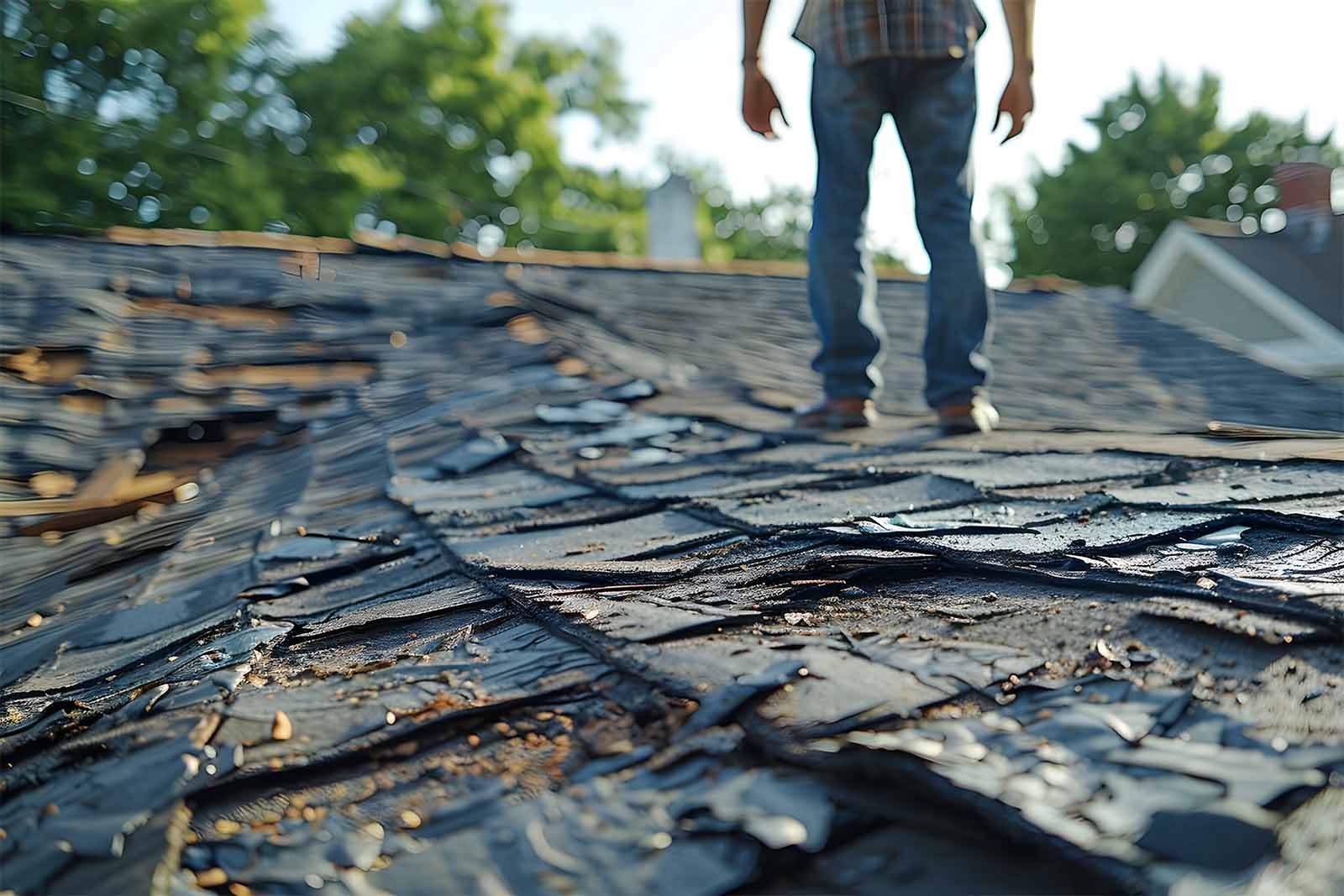Storms in Houston can leave your roof vulnerable to significant damage. Being able to identify and repair storm damage quickly is crucial to maintaining the integrity of your home. This comprehensive checklist will guide you through the steps to assess and address roof damage after a storm.
For more detailed information on storm damage repair, check out our previous post: The Ultimate Guide to Storm Damage Roof Repair in Houston.
Initial Assessment After a Storm
After a storm, your first priority should be to assess the extent of the damage safely. Follow these steps:
- Wait for Safe Conditions: Ensure the storm has fully passed and there are no immediate hazards like downed power lines.
- Conduct a Visual Inspection from the Ground: Look for obvious signs of damage, such as missing shingles, damaged gutters, and debris on the roof.
- Check the Attic: Inspect for leaks, water stains, and signs of moisture or mold.
- Photograph the Damage: Document any visible damage for insurance purposes.
Detailed Roof Inspection Checklist
Performing a detailed inspection can help you identify specific areas that need attention. Here’s a checklist to guide you:
Exterior Inspection
- Shingles:
- Missing or broken shingles
- Curling or buckling shingles
- Granule loss (check gutters for granules)
- Flashing:
- Loose or damaged flashing around chimneys, vents, and skylights
- Rust or corrosion
- Gutters and Downspouts:
- Clogged or damaged gutters
- Detached downspouts
- Roof Vents:
- Check for damage or blockages
- Ensure they are properly sealed
Interior Inspection
- Attic:
- Water stains on rafters or insulation
- Mold or mildew growth
- Daylight shining through roof boards
- Ceilings:
- Water stains or discoloration
- Sagging ceiling materials
Immediate Actions to Take
If you find storm damage, taking immediate action can prevent further deterioration:
- Temporary Repairs: Use tarps or roofing cement to cover leaks temporarily.
- Clear Debris: Safely remove branches or other debris from your roof.
- Secure Loose Materials: Nail down loose shingles or flashing.
Repairing Storm Damage
DIY Repairs
For minor damage, you might be able to handle repairs yourself:
- Shingle Replacement: Replace missing or damaged shingles with new ones that match your existing roof.
- Gutter Repair: Reattach or replace damaged gutters and ensure they are clear of debris.
- Seal Leaks: Use roofing cement or caulk to seal small leaks and cracks.
Professional Repairs
For significant damage, it’s best to hire a professional roofer:
- Structural Damage: Broken rafters or severe sagging require expert repair.
- Extensive Shingle Damage: Large areas of missing or damaged shingles.
- Persistent Leaks: Ongoing water infiltration that can’t be resolved with DIY methods.
Preventive Measures for Future Storms
Taking preventive measures can help minimize storm damage in the future:
- Regular Inspections: Schedule professional roof inspections at least twice a year.
- Roof Maintenance: Keep your roof in good condition with regular maintenance.
- Tree Trimming: Trim branches that could fall on your roof during a storm.
- Upgrade Materials: Consider storm-resistant shingles and reinforced roofing materials.
Working with Insurance to Repair Storm Damage
Dealing with storm damage often involves navigating insurance claims:
- Document Everything: Take detailed photos and keep records of all damage and repairs.
- Understand Your Policy: Know what your homeowner’s insurance covers and the steps to file a claim.
- Contact Your Insurance Company: Report the damage as soon as possible and provide all necessary documentation.
FAQs
Q: How soon should I inspect my roof after a storm?
A: Inspect your roof as soon as it is safe to do so. Prompt assessment can help prevent further damage.
Q: What if I can’t see any damage from the ground?
A: Even if damage isn’t visible from the ground, inspect your attic and ceilings for signs of leaks. A professional inspection can also uncover hidden damage.
Q: Can I make temporary repairs myself?
A: Yes, temporary repairs like using tarps or roofing cement can help prevent further damage until professional repairs can be made.
Q: How do I choose a reliable roofing contractor?
A: Look for licensed, insured contractors with good reviews and references. Get multiple quotes and check their credentials.
Q: What should I do if my insurance claim is denied?
A: If your claim is denied, ask for a detailed explanation and consider hiring a public adjuster or appealing the decision.
Stay Proactive and Prepared
Houston’s storm season can be tough on your roof, but with the right approach, you can minimize damage and keep your home safe. Use this checklist to identify and repair storm damage effectively. For a deeper dive into roof repair strategies, read our previous post: The Ultimate Guide to Storm Damage Roof Repair in Houston.
Interesting External Links
- Angie’s List – Roof Inspection Tips
- Texas A&M AgriLife Extension – Disaster Recovery
- Family Handyman – Roof Repair Guide
By following this comprehensive checklist and staying vigilant, you can protect your roof and ensure your home remains a safe haven during Houston’s storm season.


